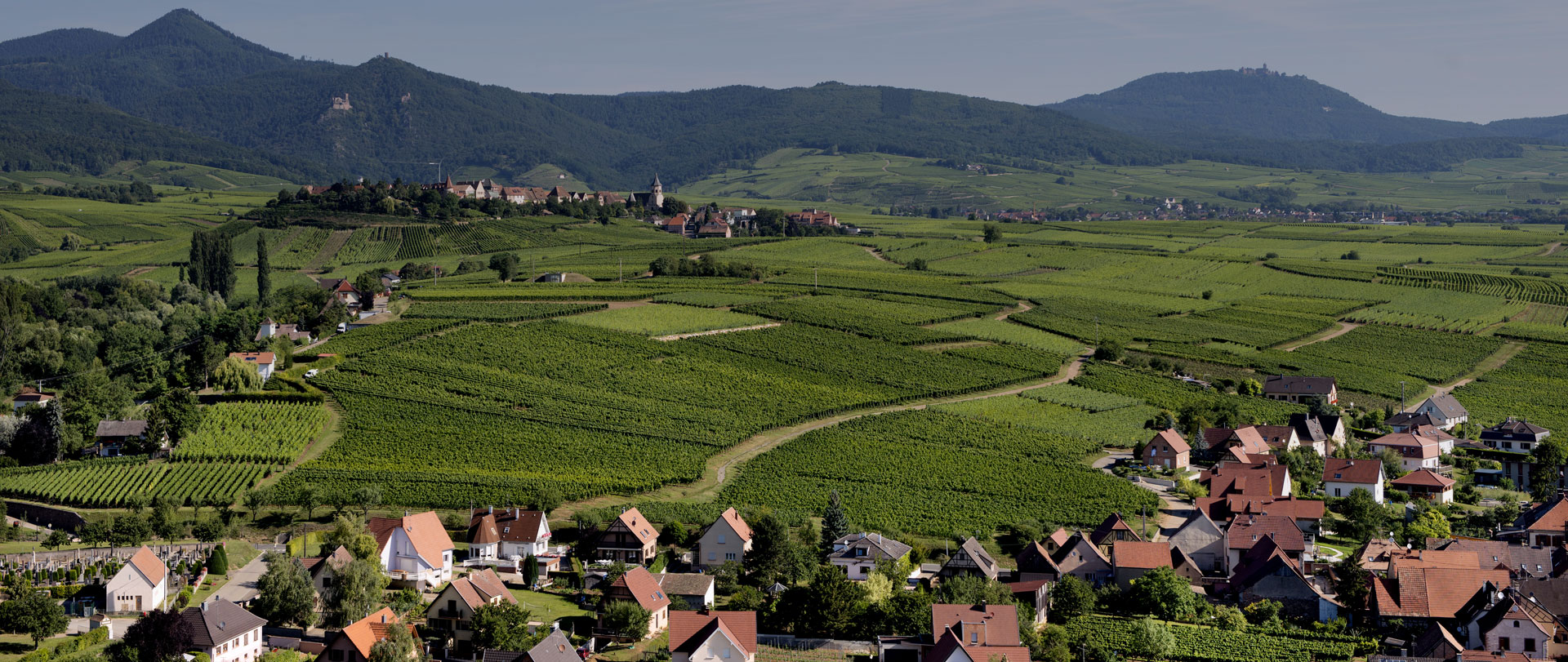The terroir
To the north of Riquewihr, the vines grow on the southern and south-eastern slopes of the Schoenenbourg hillside at an altitude of between 265 and 380 metres, on a fairly steep slope.
The 53.40 hectare vineyard is planted on Keuper marl, dolomitic and gypsum soils, which are rich in fertilising elements and retain water well. They are covered by thin Quaternary layers of siliceous Vosges sandstone and Muschelkalk pebbles, while at the eastern end limestone marls from the Lias outcrop.
On the Schoenenbourg, Riesling is king. Muscat and Pinot Gris also thrive here.
Renowned since the High Middle Ages, Schoenenbourg wines were famous throughout northern Europe from the 16th century onwards. The great Swiss cartographer Merian mentioned it in 1663:
‘The Schoenenbourg, where the noblest wine of this country grows…’.
Voltaire owned several acres.
The Schoenenbourg Grands Crus are excellent wines for laying down, with powerful, rich aromas. The microclimate of the terroir is particularly suited to the prestigious Vendanges Tardives and Sélections de Grains Nobles.
The wines
The gypsum strongly influences the personality of this Grand Cru.
« The wine’s structure is full-bodied and voluminous, underpinned by a tension that gives it great structure. The gypsum expresses itself through a distinctive minerality, with notes of smoke, matches and gunflint.
The natural power of this Grand Cru and its own range of aromas, determined by its terroir, temper the expression of the grape variety. In the Schoenenbourg, Riesling finds one of its favourite terroirs, while the other grape varieties have a strong mineral expression. This Grand Cru also produces great sweet wines. »
Vintages
Schoenenbourg requires patience. While it already possesses a great deal of charm when young, it is only after five to seven years of cellaring that it will truly express its potential, and then retain its qualities for many years to come.
Early vintages: a soft volume with exotic aromas gives the taster a sensation of power combined with a complex patina, which precedes a minerality reminiscent of warm stones.
In late vintages, a more pronounced tension gives the wines a straightforwardness that also allows them to express a ‘gunpowder’ minerality. The range of aromas reveals subtle notes of fresh or dried flowers.
Pairings
The mineral spirit and tension of this Grand Cru can be used to refine and soothe the strength of dishes. For example, a monkfish tajine with spices, fried fish or fish fritters would be perfect with this wine, as the wine’s generosity and volume blend with the rich texture of the dishes, while calming the strength of the seasoning and preserving the character of the flavours.
Vendanges Tardives and Sélection de Gains Nobles wines are so rich that they can stand on their own. But they also go very well with yellow fruit or, more surprisingly, white chocolate.
Photo © ZVARDON / Textes CIVA – www.VinsAlsace.com





